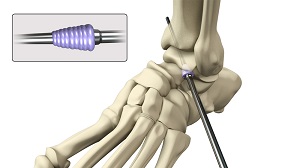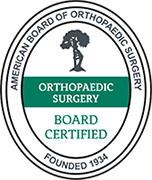
What is the Subtalar Joint?
The subtalar joint is a complex joint located below the ankle joint and is formed by the union of the heel (calcaneus) and the talus (ankle) bone. The subtalar joint allows side-to-side movement of the foot.
What is Subtalar Arthrodesis?
Subtalar arthrodesis is the surgical fusion of bones that form the subtalar joint. The goal of subtalar arthrodesis is to relieve pain in the affected joint. This is achieved by surgically eliminating the joint.
What are the Indications for Subtalar Arthrodesis?
Subtalar arthrodesis is recommended for the treatment of severe end-stage arthritis that has not responded to conservative treatment measures such as medications, injections and bracing. The other indications include fracture, flatfoot deformity, and other degenerative bone diseases.
What are the Diagnostic Tests ordered for Subtalar Arthrodesis?
A complete medical history, including a history of any previous ankle injuries, and a physical examination is essential for an accurate diagnosis of the condition. Imaging tests such as X-rays, 99Tc bone scan or MRI may be ordered.
How is a Subtalar Arthrodesis Performed?
Subtalar arthrodesis can be performed as an arthroscopic or traditional open surgery. The approach for an open technique is from the anterior (front) aspect of the ankle. The access is gained to the joint surface and is followed by the removal of the degenerated cartilage tissue. The joints are then fused together with the help of screws, wires, plates, or rods. Bone grafting is recommended in cases of substantial bone loss. A graft can be taken from your own body (autograft) or donor tissue (allograft).
What are the Postoperative Guidelines for Subtalar Arthrodesis?
The postoperative guidelines to be followed immediately after subtalar arthrodesis include:
- Keep your cast or dressing dry and do not remove for the specified time given by your surgeon.
- Avoid bearing weight on the operated ankle and use crutches or wheelchairs for a few weeks.
- Elevate the foot above heart level to minimize swelling.
- Eating a healthy diet and quitting smoking will help with healing.
The recovery time following fusion will depend on the technique employed and your health status.
What are the Risks and Complications of Subtalar Arthrodesis?
Subtalar arthrodesis is usually a safe procedure. Complications are uncommon; however, apart from general complications related to any surgery, complications after subtalar arthrodesis can include infection, nerve damage, unresolved pain, non-union and malunion of bones, and irritation from foreign material such as pins or screws.










